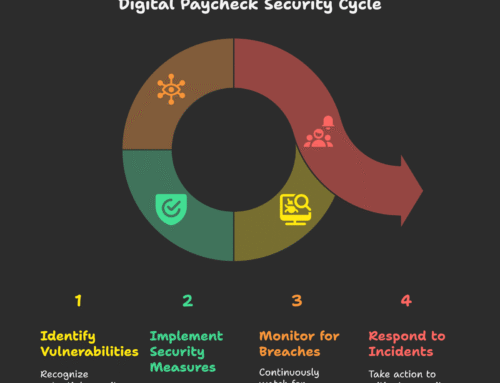SWOT analysis is a strategic planning tool that helps organizations to identify and analyze their internal strengths and weaknesses, as well as external opportunities and threats. SWOT analysis is commonly used in organizational development to create strategies that leverage strengths, minimize weaknesses, capitalize on opportunities, and mitigate threats.
In particular, the human resources (HR) department plays a critical role in conducting a SWOT analysis for organizational development. HR professionals are responsible for evaluating the strengths and weaknesses of their department, identifying opportunities and threats in HR policies and practices, and developing strategies that align with the organization’s overall SWOT analysis.
This article aims to provide insights into the role of HR in conducting SWOT analysis for organizational development. We will discuss the key responsibilities of HR in conducting SWOT analysis, the various ways SWOT analysis can be used in HR planning and strategy development, as well as the importance of SWOT analysis in HR performance management, recruitment and selection, and training and development. Lastly, we will explore some SWOT analysis templates that HR professionals can use to conduct a more efficient and effective analysis.

Image by rawpixel.com on Freepik
Understanding the Role of HR in Conducting SWOT Analysis
HR plays a crucial role in conducting a SWOT analysis for organizational development. By collaborating with other departments and stakeholders, HR professionals can gain valuable insights into the organization’s strengths, weaknesses, opportunities, and threats. In addition, HR professionals can define the objectives and scope of the analysis, collect relevant data, and ensure that the SWOT analysis aligns with the organization’s overall strategy and goals.
Collaborating with Other Departments: One of the primary responsibilities of HR in conducting SWOT analysis is to collaborate with other departments and stakeholders. By doing so, HR professionals can better understand the organization’s internal and external environment, identify key issues and challenges, and develop strategies that leverage the organization’s strengths and opportunities while minimizing weaknesses and threats. HR professionals can work with departments such as finance, operations, marketing, and sales to ensure that the SWOT analysis is comprehensive and aligned with the organization’s overall strategy.
Defining Objectives and Scope of Analysis: Another critical responsibility of HR in conducting a SWOT analysis is to define the objectives and scope of the analysis. This involves identifying the specific areas of the organization that will be analyzed, as well as the goals and outcomes that the analysis should achieve. HR professionals can work with other stakeholders to ensure that the SWOT analysis addresses key issues and challenges and that the resulting strategies are aligned with the organization’s overall objectives.
Collecting Relevant Data: HR professionals are responsible for collecting and analyzing relevant data for the SWOT analysis. This includes quantitative and qualitative data, such as financial data, employee performance metrics, customer feedback, market trends, and competitive analysis. HR professionals can also gather data through surveys, focus groups, and other research methods to gain a more comprehensive understanding of the organization’s strengths, weaknesses, opportunities, and threats.
Using SWOT Analysis in HR Planning and Strategy Development
SWOT analysis can be a powerful tool for HR professionals in developing HR plans and strategies. By analyzing the organization’s internal and external environment, HR professionals can identify key issues and challenges, and develop strategies that leverage strengths, minimize weaknesses, capitalize on opportunities, and mitigate threats. Here are some examples of how SWOT analysis can be used in HR planning and strategy development:
- HR Performance Management: SWOT analysis can help HR professionals to identify the strengths and weaknesses of the organization’s performance management system. This can include identifying areas where employee performance can be improved, such as through training and development, and addressing any weaknesses in the system that may be hindering employee performance.
- Recruitment and Selection: SWOT analysis can be used to identify the organization’s internal strengths and weaknesses, as well as external opportunities and threats, in the context of recruitment and selection. For example, HR professionals can use SWOT analysis to identify areas where the organization has a competitive advantage in attracting and retaining top talent, as well as areas where the organization may be vulnerable to external competition for talent.
- Training and Development: SWOT analysis can be used to identify the organization’s internal strengths and weaknesses in the context of training and development. HR professionals can use SWOT analysis to identify areas where the organization has a strong employee development program, as well as areas where improvements can be made, such as in the delivery of training and development programs.
- Diversity and Inclusion: SWOT analysis can be used to identify the organization’s internal strengths and weaknesses, as well as external opportunities and threats, in the context of diversity and inclusion. HR professionals can use SWOT analysis to identify areas where the organization is doing well in promoting diversity and inclusion, as well as areas where improvements can be made, such as in the recruitment and retention of diverse employees.
The Importance of SWOT Analysis in HR Performance Management
SWOT analysis can be a critical tool for HR professionals in developing effective performance management strategies. By analyzing the organization’s strengths, weaknesses, opportunities, and threats, HR professionals can identify areas where employee performance can be improved and develop strategies that address these areas. Here are some examples of how SWOT analysis can be used in HR performance management:
- Identifying Training and Development Needs: SWOT analysis can help HR professionals to identify areas where employees may need additional training and development to improve their performance. For example, if the analysis identifies a weakness in the organization’s customer service, HR professionals can develop training programs that address this weakness.
- Addressing Performance Issues: SWOT analysis can help HR professionals to identify areas where employee performance is subpar, such as in the areas of productivity, quality, or attendance. HR professionals can then develop strategies to address these performance issues, such as through coaching or counseling, or by implementing a performance improvement plan.
- Aligning Performance with Organizational Goals: SWOT analysis can help HR professionals to ensure that employee performance is aligned with the organization’s overall goals and objectives. By identifying areas where employee performance can contribute to the organization’s success, HR professionals can develop performance goals and objectives that are consistent with the organization’s strategic direction.
- Leveraging Strengths: SWOT analysis can help HR professionals identify areas where employees excel and leverage these strengths to improve overall performance. For example, if the analysis identifies strengths in the area of innovation, HR professionals can develop programs that encourage employees to share ideas and collaborate on new projects.
SWOT Analysis Templates for HR Professionals
While SWOT analysis can be a powerful tool for HR professionals, it can also be a complex process. To simplify the process, many HR professionals use SWOT analysis templates. These templates provide a framework for conducting a SWOT analysis and can help HR professionals to organize their thoughts and ideas. Here are some common SWOT analysis templates used by HR professionals:
Basic SWOT Analysis Template:
This template is a simple framework for conducting a SWOT analysis. It consists of four quadrants: strengths, weaknesses, opportunities, and threats. HR professionals can list the organization’s strengths, weaknesses, opportunities, and threats in each quadrant and use this information to develop HR plans and strategies.
SWOT Analysis Matrix Template:
This template is a more detailed framework for conducting a SWOT analysis. It consists of a matrix with four quadrants: strengths, weaknesses, opportunities, and threats. HR professionals can list the organization’s strengths and weaknesses in the rows and opportunities and threats in the columns. This allows HR professionals to analyze the relationship between the organization’s strengths, weaknesses, opportunities, and threats.
SWOT Analysis Tree Template:
This template is a visual framework for conducting a SWOT analysis. It consists of a tree with four branches: strengths, weaknesses, opportunities, and threats. HR professionals can list the organization’s strengths, weaknesses, opportunities, and threats on each branch of the tree. This allows HR professionals to see the relationships between the organization’s strengths, weaknesses, opportunities, and threats.
SWOT analysis templates can be a valuable tool for HR professionals in conducting a SWOT analysis. By providing a framework for organizing information, SWOT analysis templates can simplify the process and help HR professionals to develop effective HR plans and strategies.
Conclusion
In conclusion, SWOT analysis is a critical tool for HR professionals in conducting a comprehensive analysis of an organization’s strengths, weaknesses, opportunities, and threats. By conducting a SWOT analysis, HR professionals can develop effective HR plans and strategies that address the organization’s key issues and contribute to its overall success.
SWOT analysis can be used in various HR functions such as recruitment, retention, training and development, performance management, and succession planning. HR professionals can leverage the insights from a SWOT analysis to create better alignment between HR strategies and the organization’s goals and objectives.
The use of SWOT analysis templates can make the process of conducting a SWOT analysis more efficient and effective. HR professionals can select the template that best fits their needs and customize it based on the organization’s unique characteristics.
Overall, SWOT analysis is a powerful tool that HR professionals can use to improve organizational performance and drive success. By conducting a SWOT analysis and using the insights gained to develop effective HR strategies, HR professionals can help their organization to achieve its goals and objectives.






I love how you break down complex ideas into digestible pieces. Excellent writing!
This article was a delightful read! Your passion for the subject matter really comes through in your writing.
I’m always amazed at the quality of your writing. This post was no exception. Fantastic job!
You have a special talent for making even the most complex topics understandable and interesting.